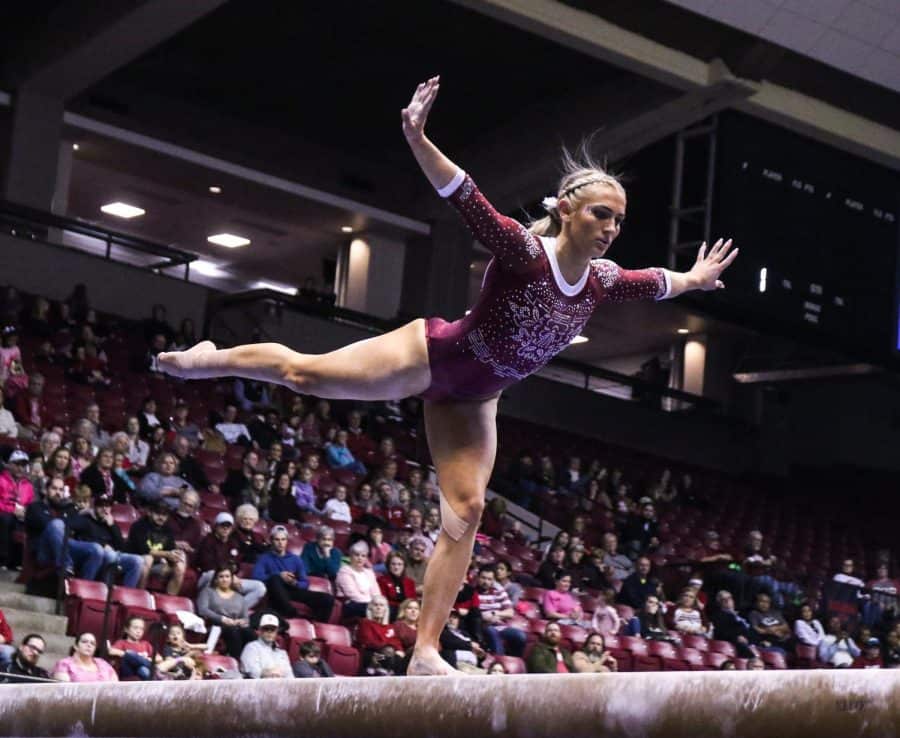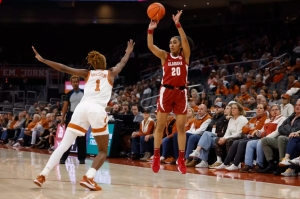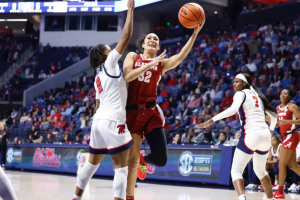The anatomy of a perfect 10: Analyzing Alabama gymnastics routines
February 20, 2020
From mount to dismount, a collegiate uneven bars routine lasts about 15-20 seconds. Behind that 15-second routine are years of training, months of preparation and just the right combination of skills and point values.
Many gymnasts on the Alabama roster competed at the Elite Gymnastics or Junior Olympics levels, where scoring is completely different than in college. Sophomore Emily Gaskins, who was a three-time member of the United States national team, made adjustments to her routine while at Alabama.
“Our scoring systems were, if you got a 14 and 15, it was awesome,” Gaskins said. “And coming to college, you don’t have that score and it only goes to 10. You take out a lot of skills in your routine. You’re going from about a minute bar routine to a 10-second, 15-second bar routine.”
At the level of a program like Alabama gymnastics, outside of vault – which is a one-skill routine – every gymnast’s routine starts at a 10.0 value. It takes a lot to reach that value, including the basics that must be included in every routine.
“Your skills are basically labeled a value of an A, B, C, D and E,” coach Dana Duckworth said. “When you develop a routine, there are minimum requirements in bars, beam and floor. You have to have three A’s, two B’s and two C’s.”
Every Alabama gymnast has more than A’s, B’s and C’s in their routine. For example, senior Wynter Childers starts her bars routine out with a kip cast handstand, which is an A skill. She will then release to the high bar with a Maloney, a D-level skill. Then she goes immediately back to the low bar with a bail, which is another D skill.
Childers gets a one-tenth bonus for each D-level skill. Because she connects the two, she gets another 0.20 bonus, which is the CV, or connection value. And those are just three of the skills in her routine.
Every routine requires a total of eight skills, even if the 10.0 start value has already been reached. For example, freshman Ella Burgess’ routine had all the required difficulty to reach a 10.0 start value on beam, but she only had seven skills, so they had to add a switch leap.
Even though 15-20 seconds seems like a short amount of time to a fan watching from the stands or on TV, there is a lot running through a gymnast’s mind during that time. For some, like senior Shea Mahoney, it helps to constantly stay thinking throughout the routine.
“So I’ll mount the bar, and I just have mental cues,” Mahoney said. “For me it’s more of a feeling, and then little tiny words. If I just keep kind of talking to myself throughout the whole bar routine, that is how I’ll get through.”
Mahoney’s mental cues for bars are: mount, tight cast, tight hips, catch the bar, jump to the high bar, tight hips, catch the bar, giant, giant, squeeze your core, look at the ground, wait another second and then really look at the ground, dismount.
Before mounting the bars, Mahoney said she smiles because it releases any last bit of tension or nervousness.
For sophomore Jensie Givens, every uneven bars routine starts with a nod to assistant coach Ryan Roberts, a nod to Gaskins and a deep breath to remind herself that “God’s got her.” And then she moves into her routine of handstands, a Jaeger (a D-level skill), a bail to the low bar, three giants and a double layout dismount, hoping for the all-important stick on the landing.
Alabama will once again put these skilled routines to the test when it takes on the Florida Gators in Gainesville, Florida, on Friday at 5 p.m.










